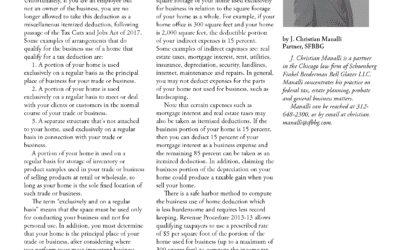What is the practical effect of two recent FLSA rulings?
In recent months, two different courts sitting in Texas have issued headline-grabbing rulings interpreting the Federal Fair Labor Standards Act (“FLSA”). On September 11, 2024, in Mayfield v. U.S. Department of Labor, the U.S. Fifth Circuit Court of Appeals upheld the Department of Labor’s authority to promulgate rules under the FLSA relating to the minimum salary threshold for the so-called “white-collar” exemptions to that law. This DOL rule tells employers that for employees earning under a certain threshold amount, federal minimum wage and overtime rules must be applied.
Plaintiff Mayfield argued that the DOL had no legal authority to impose any sort of salary threshold for its minimum wage and overtime rules. Mayfield, a restaurant owner, argued that if he had to pay each of his managers a higher salary (i.e., overtime), he would be unable to give bonuses to his high performers. The Fifth Circuit ruled against Mayfield, and held that the FLSA allows the DOL to impose a minimum salary threshold, below which the federal minimum wage and overtime rules presumptively apply.
Meanwhile, on November 15, 2024, in Texas v. U.S. Department of Labor, the U.S. District Court for the Eastern District of Texas struck down a later set of DOL rules setting newer salary thresholds for the same “white collar” overtime exception. That court’s ruling has immediate nationwide effect.
Can these two decisions be reconciled? What do they mean for business owners nationwide? Let’s look at those questions one at a time:
The answer to the first question is “yes.” Mayfield came down in September from the federal appellate court that oversees Texas, so when the lower court issued its ruling in November, it was bound to follow the holding in that case. Thus, the lower court began its decision by analyzing the Mayfield court’s ruling on what the DOL could and could not do in setting a salary threshold for the executive, administrative, and professional exemption (“EAP Exemption”) under the FLSA’s minimum wage and overtime rules.
The lower court noted that the Mayfield court confirmed the DOL has the power under the FLSA to “define and delimit” the EAP Exemption, but such power was “not unbounded.” Rather, the DOL’s choice – which is embodied in the DOL’s “rules” – has to bear a rational relationship to the text and structure of the FLSA. The lower court found that the DOL’s most recent rule, which went into effect July 1, 2024, was improper because the DOL had effectively replaced the statutory language of the FLSA with a formula of its own creation. Thus, while the DOL has the authority to reset or modify the EAP Exemption, the manner it chose to enact its 2024 rule proved inconsistent with that authority.
As for what these rulings mean for business owners, the answer lies in the remedy imposed by the trial court in the Texas case. The DOL’s new EAP Exemption rule was set for another adjustment to the salary threshold to take effect on January 1, 2025. However, the Texas court found the rule exceeded the DOL’s statutory authority, and struck it down nationwide. The court could have imposed lesser relief, but opted to vacate the DOL rule in its entirety.
The incoming Trump Administration is unlikely to appeal the lower court’s decision, so the DOL’s 2024 FLSA rule is likely gone for the foreseeable future.
Please contact Adam Hirsch with any questions at (312) 648-2300 or by e-mail at [email protected].



